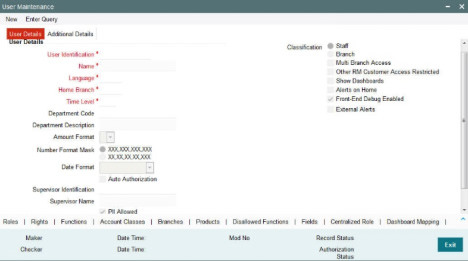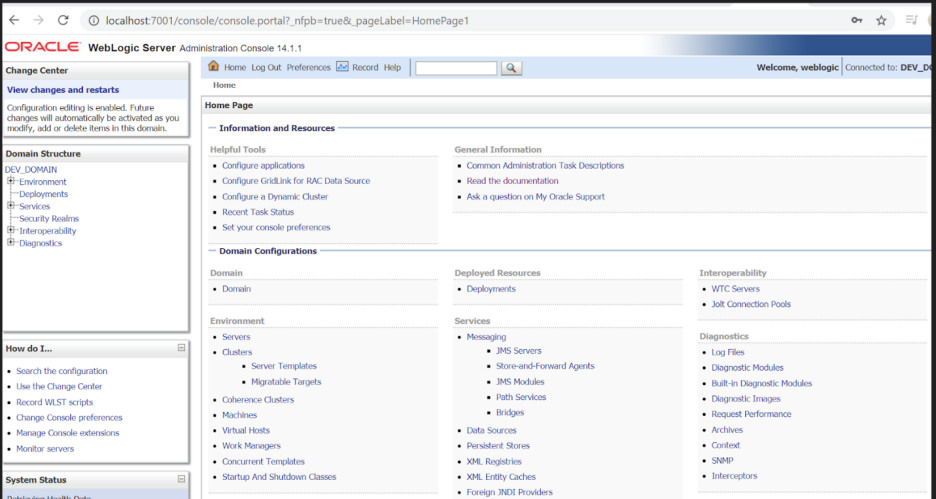Oracle FLEXCUBE is undoubtedly one of the leading Banking/Financial software in the world. It provides robust, flexible, secure, highly customizable, and scalable solutions.
FLEXCUBE UBS – (Universal Banking Solutions) as it is popularly called can integrate and interact with a wide variety of third-party products and also be Co-Deployed with multiple Oracle financial products. This rich feature often wins over the competition in the field.
The scope of this document will purely be focused on the Implementation aspects of Oracle FLEXCUBE from a SysAdmins perspective.
The Implementation world often comprises the following areas:
- Functional: People who have expert knowledge in the financial domain, set up FLEXCUBE as per the Banks requirements
- Developers: People who have high technical skills in developing the Core software (generic) for all banks + Custom Code (specific to Banks’ needs). They also help in fixing bugs and providing patches for the smooth running of code
- SysAdmins: People who deploy FLEXCUBE (Front end and Back End), run patches, upgrade products, sanity testing of the application, and upkeep the product
- Testing: Banking team + Implementation team, testing the features and raising bugs/issues to fix
- IT Infra: People who work on the Infra(server), storage, and maintenance
There is also a highly technical skill set like Techno-Functional which has skills amalgamating from both technical and functional aspects.
One of the reasons FLEXCUBE is so popular is the robust and well-organized Installation and setup process. The setup comprises the following components.
- Oracle FLEXCUBE Binaries (Setup files)
- Oracle WebLogic Server: To host the application (Front end)
- Oracle Linux Server: To host the application (Back end)
- Database Server: To host the database and product data
Let’s dive a little deeper into each of the following:
Oracle FLEXCUBE Binaries (Setup files)
The binary files or the installation files can be downloaded directly from the Oracle edelivery website. Search for the required UBS version and download the files.
https://edelivery.oracle.com/
(This document will focus on architecture, and the complete installation steps in the next part)
The latest version is currently 14.6

Oracle FLEXCUBE backend usually has 2 parts associated with the backend. (The files that are hosted on the server)
- The installation files (Core/Customized) software which is used for the installation of the product, creates the database objects(tables, packages, procedures, views) that help in product functionality
We also use these files to create a property file, that encompasses all the parameters required in the setup and running of the application – For example hostname, port, application paths, timeout settings, and a lot of other parameters.
- After the installation, we get 2 parts
- EAR(Application to be deployed) on the WebLogic
- JS/UIXML: These are the files related to the screen (functionid) that are used in the application front-end
- Example: SMDUSRDF (User maintenance)

Oracle WebLogic Server
The application file can be downloaded from the below link.
https://www.oracle.com/ca-en/middleware/technologies/weblogic.html
Weblogic is the middleware platform used to host the FLEXCUBE application and other deployments. It is very organized and simple to set up and debug issues.
The application is created into a deployable file called EAR (Enterprise Archive), which contains java class files, libraries, enterprise beans, and JAR files that the application requires for deployment.
The application EAR file is then deployed onto a managed server which is used to access via a port.
(We will see the complete installation steps in the next part, this document will focus on the architecture)
Below are the various components involved in setting up the environment used to access the application
- Admin Server: Used to control (start/stop) the domain (Whole webserver)
- Managed Server: The individual server that hosts the application. This can be singular or part of a cluster to provide a highly fault-tolerant capacity
The domain can be clustered across servers to provide HA capabilities.
We have multiple managed servers based on the number of users connecting to the application. If there are a high number of users, we create additional managed servers to share the load
- JDBC: These are the connection strings that provide the connection between the Application and the Database
- File store / Persistent store: The persistent store provides a built-in, high-performance storage solution for WebLogic Server subsystems and services that require persistence. For example, it can store persistent JMS messages or temporarily store messages sent using the Store-and-Forward feature
- JMS Server: WebLogic JMS is an enterprise-class messaging system that is tightly integrated into the WebLogic Server platform. It acts as a management container for resources within JMS modules. Some of its responsibilities include the maintenance of persistence and the state of messages and subscribers. A JMS server is required to create a JMS module
- Connection Queues: A JMS queue (as opposed to a JMS topic) is a point-to-point destination type. A message is written to a specific queue or received from a specific queue
- Connection Factories: A connection factory is a resource that enables JMS clients to create connections to JMS destinations
- JMS Module: A JMS module is a definition that contains JMS resources such as queues and topics. A JMS module is required to create a JMS queue.
A sample look at WebLogic middleware console 14c

This describes a very generic overview of how the Flexcube product setup is shaped in general. We will further see in detail about the setup in the next blog.












